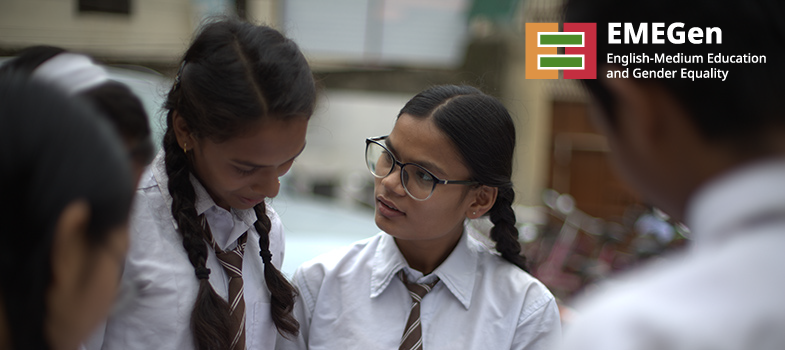OER 4 Digital and tech for language and learning
1 Role of digital in girls’ lives
The British Council carried out a global research exercise on the role of digital and technology in the lives of adolescent girls in:
- Brazil, Mexico, and Colombia.
- Bangladesh, Pakistan, India and Nepal.
- Myanmar, Indonesia and Vietnam.
- Syria.
- Nigeria, Sierra Leone, Sudan and Ethiopia.
What is girls’ level of digital literacy and what access do they have to digital technology and platforms?
Read these two excerpts from the 2022 ‘EDGE (English and Digital for Girls’ Education)’ report. As you read, notice the uses of digital and tech for language and communication, and for learning in general. Do you notice similarities or differences to your own context?
You can find the whole report in the ‘Further resources’ section.
Nigeria
Access to digital technology, particularly mobile phones, is widespread across all the surveyed states in both urban and rural communities. Mobile phones are often internet enabled and used to access social media platforms like WhatsApp, YouTube and Facebook. Adolescents mainly rely on mobile phones to connect with friends and peers, meet new people, do school assignments and find information. However, very few adolescents own or have access to personal computers. There is unequal access and use of digital skills between the poor and rich, rural and urban communities, as well as communities in the North and South (Ifijeh et al., 2016; Girl Effect, 2016).
Across the states, the girls expressed enthusiasm to learn, believing that it is important to develop their English and computing skills (including the use of computer applications like Microsoft Excel and Word) in order to interact effectively, boost their productivity and generate additional income. Parents believe their children will benefit and become better people if they can develop digital literacy and digital skills. Another motivation is to be able to complete digital forms themselves, without having to travel far to get help to do so.
(p. 22)
Myanmar
Women in Myanmar are 14 per cent less likely to own a mobile phone than men despite improvements in access and affordability (GSMA, 2020). This gender gap is likely a result of a combination of low household income and traditional gender roles that prioritise men for mobile ownership (Scott, 2017). Rural and ethnic-minority women lack accessible and relevant online content due to higher rates of female illiteracy and the language of the content.
Women’s digital skills are limited, they have less time to explore digital technologies, and they often rely on men to learn ‘how’ to do things on mobiles (GSMA & LIRNE Asia, 2016). Reasons suggested for women and girls’ lack of digital skills include:
- Most girls in rural areas do not know how to use the phone to access the internet or send text messages
- Women work longer hours of unpaid household work and have less time to explore digital technologies than men
- Women’s opportunities for skills training and employment are hampered by restricted mobility, especially in rural and conflict-affected areas
The threat of online violence and the dangers of online dating can lead to parents censoring adolescent girls’ access to digital technologies
Adolescent girls tend to use a family member’s phone, with their access often restricted by fathers who believe that they are protecting them from drugs, being trafficked or being distracted from their studies (Bartholomew & Calder, 2018). For girls who do own a phone, they use them mainly to access Facebook.
(p. 59)
Next, read from global research about girls and mobile phones.
